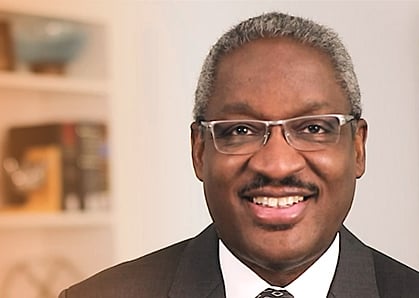Al Dotson is the Champion of Public-Private Partnerships
Albert E. Dotson Jr. is a partner with Bilzin Sumberg Baena Price & Axelrod and leads the law firm’s government relations and land development practice. He represents a number of companies involved in Public-Private Partnerships (P3s), including Odebrecht USA; South Beach ACE, one of the developers seeking to upgrade the Miami Beach Convention Center; and Wexford Science & Technology, which is developing a bioscience business park in Miami’s Overtown neighborhood.
A director on the Orange Bowl Committee, Dotson is a supporter of the proposed partnership among the state, the county and the Miami Dolphins for the proposed $400 million upgrade to Sun Life Stadium. He spoke to the Business Journal about public-private partnerships.
The following has been edited for clarity and brevity:
SFBJ: What is the key to understanding the public value of Public-Private Partnerships?
Dotson: For public-sector entities, partnering with the private sector creates new cost and time efficiencies when it comes to planning, financing, procurement and construction. The high-profile nature of these projects has a tendency to attract top-tier companies. For example, the proposed redevelopment of the Miami Beach Convention Center has lured international development firm Tishman Hotels & Realty and Pritzker Prize-winning architect Rem Koolhaas; the under-construction Pérez Art Museum Miami was designed by Herzog & de Meuron; and the planned Airport City mixed-use project will be built by Odebrecht USA, one of the world’s largest private developers. By partnering with the private sector, local governments and communities can adequately fund these projects, stimulate sustainable job creation, support economic development and enhance overall quality of life.
SFBJ: When are P3s utilized?
Dotson: These types of partnerships are typically used to fund major infrastructure projects such as improvements in transportation, water and sewer systems, arts and cultural amenities, and other enhancements to the public realm.
SFBJ: What are key challenges for such partnerships?
Dotson: The key challenges include assessing how much risk and cost each party will assume, and how revenue streams will be divided among the parties. It is important to note that P3s, by their very nature, are partnerships, and often include both parties incurring risk and investing revenue to support the various stages of the project.
SFBJ: When should they not be used?
Dotson: When there is no viable means of public financial support for the project and whereby 100 percent of the responsibility for design, construction, operation and maintenance would be placed on the public sector. Additionally, a P3 should not be used in cases where there is no way to provide the participating private company with a return on their investment.
SFBJ: What are two examples of successful P3s?
Dotson: Some of the best examples are in the public road improvement context, such as the Interstate 595 project, because there is a dedicated funding source (i.e., tolls) to repay the private sector for funding a portion, if not all, of the design and construction cost. These partnerships allow the public sector to reduce its investment in the heavy machinery and equipment required to construct and expand public roadways, while at the same time allowing the public sector to address an immediate public need.
SFBJ: Is there a ceiling because of bonding issues?
Dotson: If a government’s bond rating is too low, then bonding can become an expensive and unwieldy proposition. If the revenue stream is too small or not reliable, then the amount of funds that can be bonded may be insufficient to support the project.
SFBJ: How does a government’s credit rating come into play?
Dotson: Whenever a government borrows money, its credit rating becomes an important issue to keep in mind. The ability to repay needs to be carefully assessed based upon all the different projects and requirements. The key is to have the appropriate financial advisers in place who can realistically project potential financial revenue (i.e., real estate taxes, and other fees and assessments), as well as the funds that can support the repayment of the bonds that have been issued.
SFBJ: Is the state/federal government making it easier to make P3s happen?
Dotson: Government has become more focused on ways to access the private sector’s expertise. New legislation must take into account that the more risk and cost that is shifted onto the public sector, the more creative the funding mechanism may need to be to include the authorization for new revenue streams.
This article is reprinted with permission from the South Florida Business Journal
